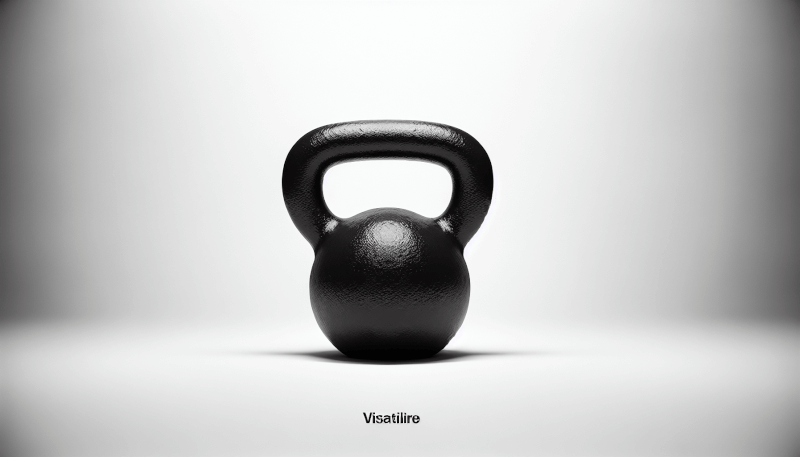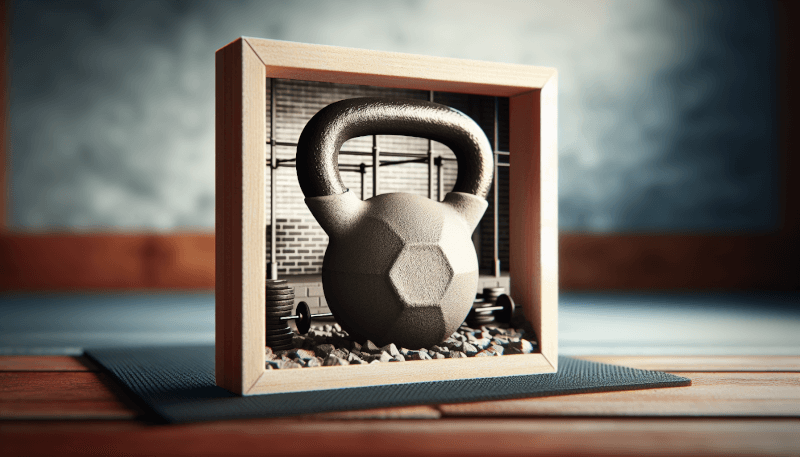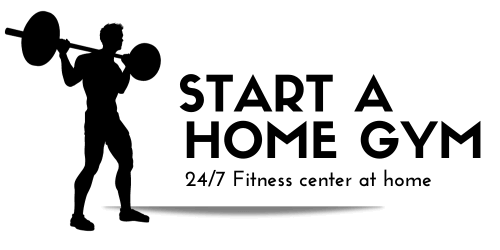Looking to create your own home gym? Look no further! This article will provide you with 10 exciting DIY projects that will transform your space into a functional training paradise. Whether you’re a fan of weightlifting, cardio, or yoga, these projects cater to a variety of workout preferences. From building your own squat rack to constructing a battle rope anchor, there’s something for everyone. Get ready to break a sweat from the comfort of your own home with these 10 DIY home gym projects for functional training.

1. Plyo Box
A plyo box is a fantastic addition to your home gym for functional training. It can be used for various exercises that focus on explosive power and agility. Whether you want to improve your vertical jump, enhance your coordination, or strengthen your lower body, a plyo box is a versatile tool that can help you achieve your fitness goals.
Materials needed
To build a plyo box, you will need the following materials:
- Plywood
- Screws
- Measuring tape
- Saw (circular or miter)
- Drill
- Screwdriver
Step-by-step instructions
Measure and cut the plywood into six pieces:
- Two identical pieces for the top and bottom (usually 20×24 inches)
- Two identical pieces for the sides (usually 20×30 inches)
- Two identical pieces for the front and back (usually 20×28 inches)
Take one side piece and attach it to the bottom piece using screws. Repeat this step with the other side piece.
Attach the front and back pieces to the side and bottom pieces using screws. Make sure everything is aligned properly.
Place the top piece on the box and secure it with screws. Double-check the alignment before tightening the screws.
Give the plyo box a thorough check to ensure it is sturdy and secure. If necessary, tighten any loose screws.
Now you have your very own plyo box ready for functional training!
2. Battle Ropes
Battle ropes are an excellent tool for full-body workouts, as they engage multiple muscle groups simultaneously. Adding battle ropes to your home gym setup can help you improve cardiovascular endurance, strengthen your arms, shoulders, and core, and enhance your overall stamina.
Materials needed
To create your battle ropes, gather the following materials:
- Rope (typically 1.5 to 2 inches in diameter and at least 50 feet long)
- Tape (electrical or duct tape)
Step-by-step instructions
Measure and cut the rope to your desired length. A standard battle rope is around 50 feet long, but you can adjust it based on your available space and workout preferences.
Once you have your desired length, wrap tape around each end of the rope to prevent fraying and secure it.
Find a sturdy anchor point in your home gym, such as a heavy piece of equipment or a wall-mounted hook.
Loop one end of the rope around the anchor point, leaving enough length to grip comfortably.
Hold the other end of the rope with both hands and get into a stable position.
Now you’re ready to perform a variety of battle rope exercises to elevate your functional training routine!

3. TRX Suspension Trainer
The TRX suspension trainer is a versatile piece of equipment that utilizes suspended straps to leverage your body weight for resistance training. It offers a wide range of exercises targeting every major muscle group, making it an excellent addition to any home gym for functional training.
Materials needed
To set up your TRX suspension trainer, you’ll need the following materials:
- TRX suspension trainer kit
- Door anchor (if you don’t have access to sturdy anchor points)
Step-by-step instructions
Identify a suitable anchor point, such as a sturdy beam, pole, or rafter in your home gym. If you don’t have any suitable anchor points, you can use the door anchor instead.
Follow the instructions provided with your TRX suspension trainer kit to properly handle and adjust the straps.
Attach the suspension trainer to the anchor point or door anchor, ensuring it is securely fastened.
Adjust the length of the straps according to the exercise you intend to perform and your height.
Familiarize yourself with the various exercises and body positions for effective and safe use of the TRX suspension trainer.
Now you’re ready to challenge yourself with a diverse range of workouts that will enhance your functional strength and stability!
4. Sandbag
A sandbag is a versatile training tool that can be used for both strength and conditioning exercises. It helps develop functional strength, stability, and grip strength. Incorporating sandbag training into your home gym routine provides a unique and challenging workout experience.
Materials needed
To create your sandbag, gather the following materials:
- Durable bag (canvas or heavy-duty duffel bag)
- Sand or similar filling material
- Duct tape (optional)
Step-by-step instructions
Choose a bag that can withstand heavy loads and has sturdy handles for grip.
Determine the weight you want for your sandbag and calculate the amount of sand needed. Start with a lighter weight and gradually add more sand as you progress.
Fill the bag with sand, ensuring it is evenly distributed. Depending on the bag’s design, you may want to seal the opening with duct tape to prevent any sand from escaping.
Once you have the desired weight, close the bag securely.
Test the sandbag’s stability and adjust the weight if necessary. Make sure the bag is well-sealed to prevent any leakage during your workouts.
Now you can incorporate the sandbag into your training routine and enjoy the benefits of functional strength and conditioning exercises!

5. Sledgehammer
Using a sledgehammer as a workout tool may not be the first thing that comes to mind, but it can be highly effective for developing upper body power, core stability, and rotational strength. Adding a sledgehammer to your home gym setup enables you to perform unique and challenging exercises that engage multiple muscle groups simultaneously.
Materials needed
To get started with sledgehammer training, you’ll need:
- Sledgehammer (4 to 12 pounds)
- Rubber mat or tire
- Safety glasses (recommended for eye protection)
Step-by-step instructions
Place the rubber mat or tire on the floor to serve as a sturdy base for striking the sledgehammer.
Stand with your feet shoulder-width apart, ensuring proper stability and balance.
Hold the sledgehammer with both hands, using an overhand grip.
Start with simple striking movements, focusing on proper form and control. Gradually increase the intensity and speed as you become more comfortable.
Incorporate various exercise techniques, such as overhead swings, side-to-side rotations, and diagonal strikes, to engage different muscle groups.
Always prioritize safety when performing sledgehammer exercises and be aware of your surroundings. With consistent practice, you’ll develop functional strength and power that translates to improved performance in various daily activities.
6. Medicine Ball
A medicine ball is a versatile piece of equipment that adds resistance and instability to your workouts. It helps improve muscular strength, power, and core stability, making it an excellent addition to any home gym for functional training.
Materials needed
To incorporate a medicine ball into your home gym setup, you’ll need:
- Medicine ball (choose a weight suitable for your fitness level)
- Adequate workout space
Step-by-step instructions
Determine the appropriate weight of the medicine ball based on your fitness level and the exercises you plan to perform. Start with a lighter weight and gradually increase as needed.
Find an open area in your home gym with sufficient clearance to perform various exercises safely.
Familiarize yourself with different medicine ball exercises, such as squats, lunges, Russian twists, overhead throws, and sit-up passes.
Begin with basic movements, focusing on technique and gradually increasing intensity and complexity.
Incorporate medicine ball exercises into your regular workouts, paying attention to proper form and avoiding excessive strain on your joints.
By adding a medicine ball to your home gym, you’ll have a versatile tool to enhance your functional training and take your fitness to the next level!

7. Pull-up Bar
A pull-up bar is an essential component of any home gym, as it allows you to perform one of the most effective upper body exercises – the pull-up. By incorporating a pull-up bar into your home gym setup, you can target your back, arms, shoulders, and core muscles while improving upper body strength and stability.
Materials needed
To set up a pull-up bar in your home gym, you’ll need:
- Sturdy pull-up bar (wall-mounted, door frame-mounted, or freestanding)
- Installation hardware (if necessary)
- Adequate clearance space
Step-by-step instructions
Determine the type of pull-up bar that suits your home gym space and meets your requirements. Options include wall-mounted, door frame-mounted, or freestanding pull-up bars.
If you choose a wall-mounted pull-up bar, mark the desired height and location on the wall. Use a stud finder to locate the wall studs for secure installation.
Follow the manufacturer’s instructions for mounting the pull-up bar securely to the wall or door frame. Use installation hardware as recommended.
If you opt for a freestanding pull-up bar, ensure a stable base and assemble it according to the manufacturer’s instructions.
Once the pull-up bar is securely installed or assembled, test its stability and weight-bearing capacity before use.
Now you’re ready to incorporate pull-up exercises into your home gym routine and build upper body strength like never before!
8. Plyometric Platform
A plyometric platform, also known as a plyo box, is an essential tool for plyometric exercises. It helps improve explosive power, agility, and overall lower body strength. By incorporating a plyometric platform into your home gym setup, you can take your functional training to new heights.
Materials needed
To build a plyometric platform, you’ll need:
- Plywood
- Screws
- Measuring tape
- Saw (circular or miter)
- Drill
- Screwdriver
Step-by-step instructions
Determine the desired height of your plyometric platform. Common heights range from 12 to 24 inches, depending on your fitness level and goals.
Measure and cut the plywood into six pieces:
- Two identical pieces for the top and bottom (usually 20×24 inches)
- Two identical pieces for the sides (usually 20×30 inches)
- Two identical pieces for the front and back (usually 20×28 inches)
Take one side piece and attach it to the bottom piece using screws. Repeat this step with the other side piece.
Attach the front and back pieces to the side and bottom pieces using screws. Ensure everything is aligned properly.
Place the top piece on the box and secure it with screws. Double-check the alignment before tightening the screws.
Give the plyometric platform a thorough check to ensure it is sturdy and secure. If necessary, tighten any loose screws.
Now you have a durable plyometric platform to enhance your functional training, whether you’re performing box jumps, step-ups, or other explosive lower body exercises!

9. Resistance Bands
Resistance bands are a versatile and affordable tool for adding resistance to your workouts. They provide continuous tension throughout the exercise, helping you develop strength, flexibility, and stability. By incorporating resistance bands into your home gym setup, you can enjoy a wide range of exercises targeting various muscle groups.
Materials needed
To incorporate resistance bands into your home gym, you’ll need:
- Resistance bands (various levels of resistance)
- Anchoring points (such as a sturdy pole, door anchor, or resistance band station)
Step-by-step instructions
Choose resistance bands with varying levels of resistance to suit your fitness level and exercise requirements. Start with lighter bands and gradually progress to higher resistance as needed.
Identify suitable anchor points in your home gym, such as a sturdy pole, door frame, or dedicated resistance band station.
If using a door anchor, attach it securely to the door frame at a suitable height.
Attach the resistance bands to the anchoring points or door anchor, ensuring they are properly secured.
Familiarize yourself with different exercises using resistance bands, such as bicep curls, tricep extensions, shoulder presses, squats, and glute bridges.
Begin with simple movements, focusing on proper form and gradually increasing resistance and complexity.
With resistance bands, you have a portable and versatile tool that allows for effective strength training wherever you are. Use them to target specific muscle groups or incorporate them into full-body workouts for a comprehensive functional training experience!
10. Wall Ball Target
A wall ball target is a fantastic addition to your home gym for functional training. It is commonly used in wall ball exercises, where you throw a medicine ball against the target to improve full-body coordination, power, and explosiveness. By incorporating a wall ball target into your home gym setup, you can elevate your workouts to new levels.
Materials needed
To create a wall ball target, you’ll need:
- Plywood
- Screws
- Measuring tape
- Saw (circular or miter)
- Drill
- Screwdriver
Step-by-step instructions
Determine the desired size of your wall ball target. A common size is 36×36 inches, but you can adjust it based on your available space and preferences.
Measure and cut the plywood into a square shape with the desired dimensions.
Attach the plywood target to the wall using screws. Ensure it is securely fastened and at a suitable height for your exercises.
Give the wall ball target a thorough check to ensure it is stable and properly mounted.
Now you have a dedicated target for wall ball exercises, allowing you to train explosive movements and improve your functional strength and coordination!
In conclusion, incorporating these 10 DIY home gym projects into your functional training routine can elevate your workouts and help you achieve your fitness goals. From plyo boxes and battle ropes to TRX suspension trainers and resistance bands, each piece of equipment offers unique benefits for developing functional strength, power, and stability. By following the step-by-step instructions and using the specified materials, you can create a comprehensive home gym setup that provides endless opportunities for effective workouts. So roll up your sleeves, grab your tools, and start building your own functional training paradise!


